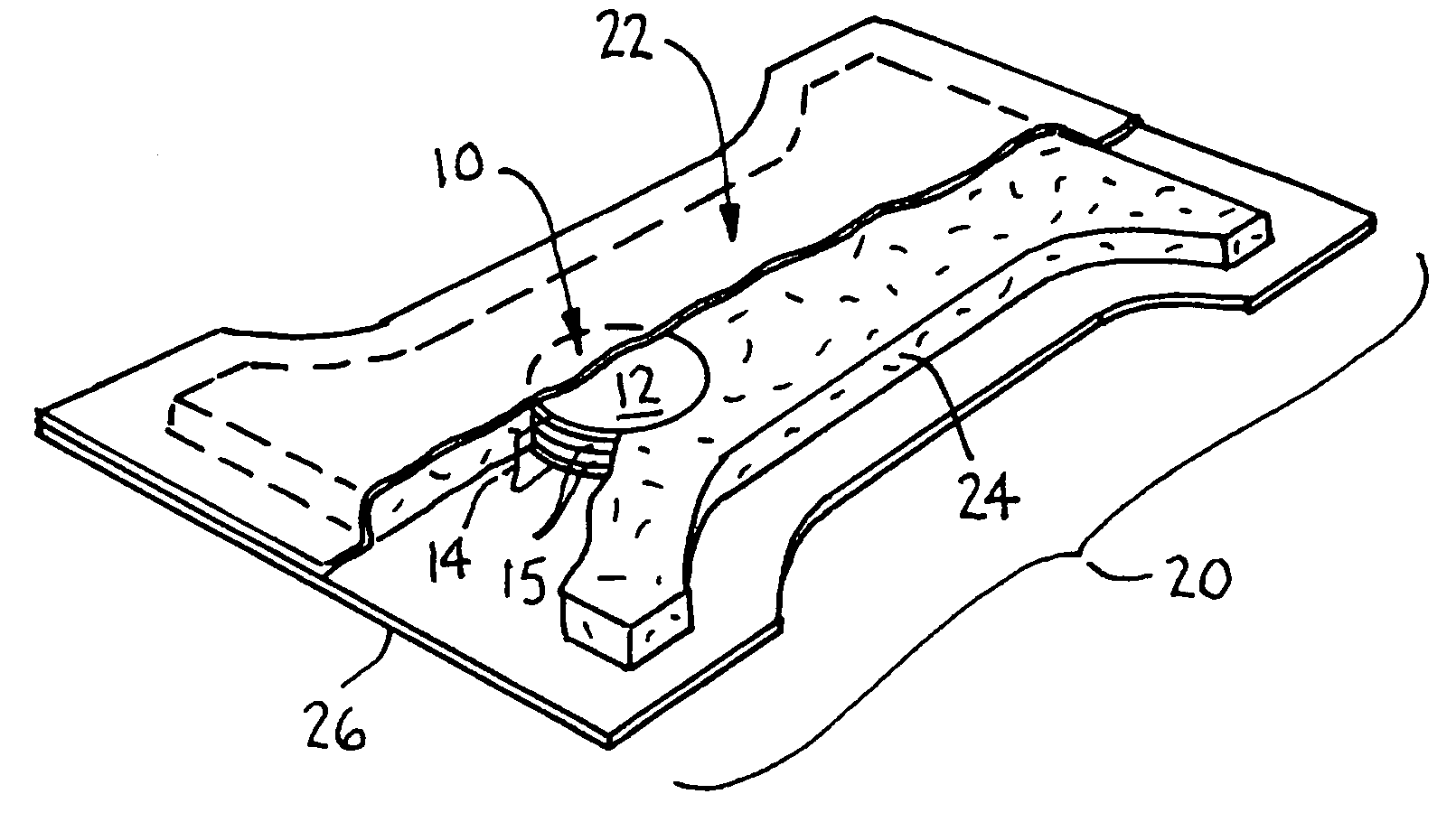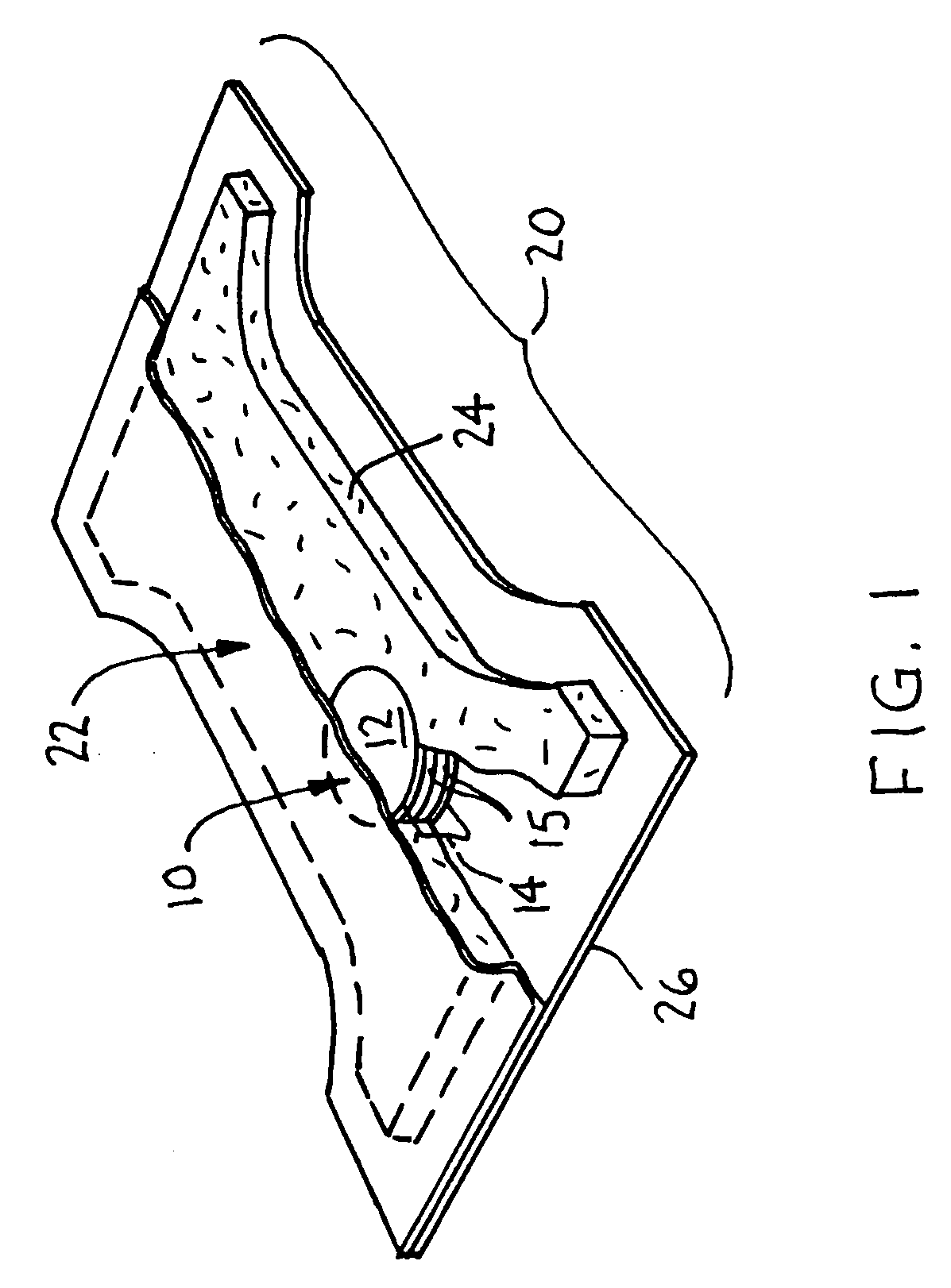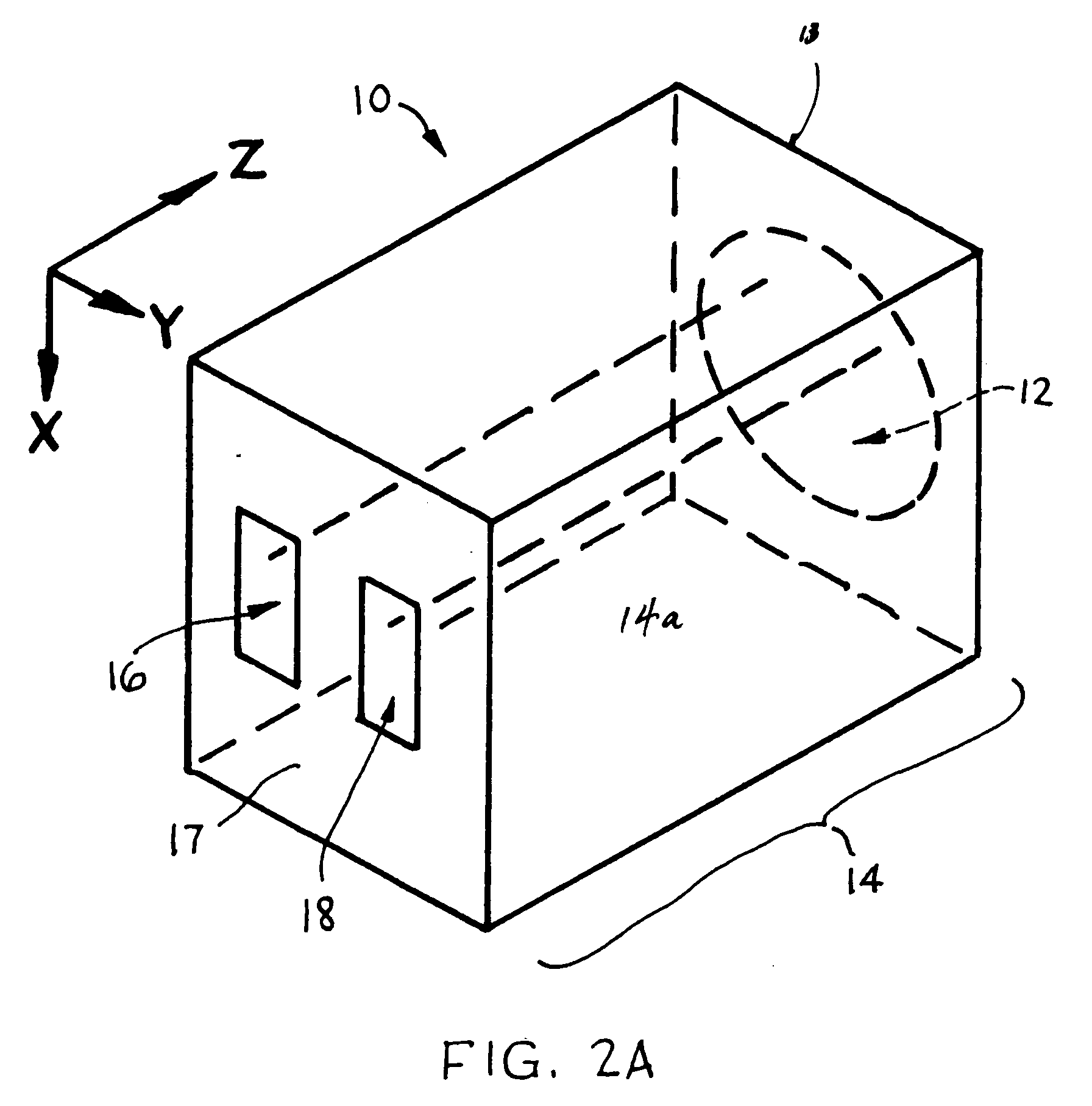Three-dimensional vertical hydration/dehydration sensor
a vertical hydration and sensor technology, applied in the field of absorbent products, can solve the problems of serious consequences for a dehydrated person, all commercially available dipsticks, and fluid imbalances that can be linked to either dehydration or hypohydration, and achieve the effect of easy integration into an absorbent articl
- Summary
- Abstract
- Description
- Claims
- Application Information
AI Technical Summary
Benefits of technology
Problems solved by technology
Method used
Image
Examples
Embodiment Construction
[0024]Conventional urine testing devices, such as dipsticks or test strips, are oriented horizontally on a largely flat, lateral-flow substrate. Typically the test strip operates by applying a sample at one end of the strip, which wicks to another area of the strip where the sample reacts with chemical agents, and then to a location where a signal can be detected. Alternatively, the test strip is dipped in a sample and taken out quickly, and any color change is then read. Such test device forms can be incorporated only into the inner side of an absorbent product for sampling and signal reading; hence, requiring the user to take-off the product before reading the result signal. This configuration can be an inconvenience, and prevent detecting or monitoring hydration results from outside the absorbent article for monitoring a health condition.
[0025]Unlike previously developed lateral flow hydration test where the detection zone and feedback zone are laid in such a way that the sample ...
PUM
 Login to View More
Login to View More Abstract
Description
Claims
Application Information
 Login to View More
Login to View More - R&D
- Intellectual Property
- Life Sciences
- Materials
- Tech Scout
- Unparalleled Data Quality
- Higher Quality Content
- 60% Fewer Hallucinations
Browse by: Latest US Patents, China's latest patents, Technical Efficacy Thesaurus, Application Domain, Technology Topic, Popular Technical Reports.
© 2025 PatSnap. All rights reserved.Legal|Privacy policy|Modern Slavery Act Transparency Statement|Sitemap|About US| Contact US: help@patsnap.com



